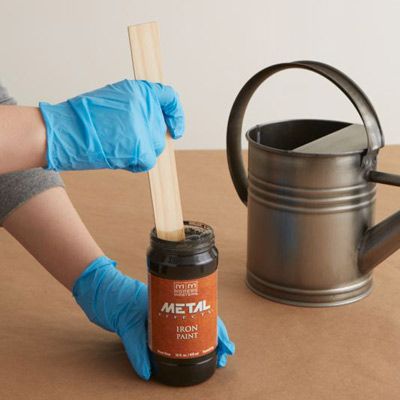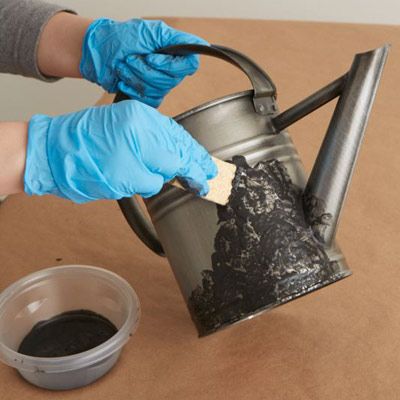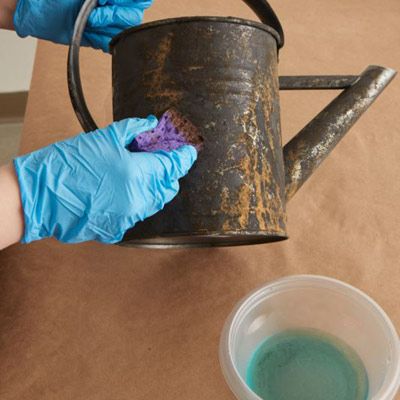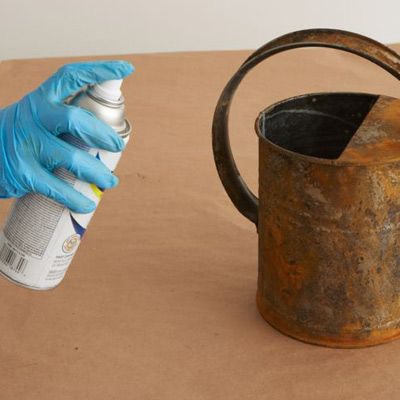We may be compensated if you purchase through links on our website. Our team is committed to delivering honest, objective, and independent reviews on home products and services.
Creating a faux rust finish on metal objects is a great way to add character and charm to your home or outdoor projects. This technique helps you achieve the look of weathered rust without damaging the metal. Whether you’re updating old metal furniture or giving new items a rustic touch, this guide will show you how to make metal look authentically aged.
How Does the Faux Rust Technique Work?
The faux rust technique involves using special paints and solutions to mimic the look of real rust. It gives your metal objects a weathered appearance without exposing them to actual corrosion. The process typically involves applying an iron-rich paint followed by a rust-activating solution, which reacts with the paint to create a realistic rust effect.
Materials and Tools Needed for Faux Rusting
Before you begin, gather the following materials:
- Iron or rust-effect paint
- Rust activator solution
- Paintbrushes or sponges
- Protective gloves
- Drop cloth or newspaper
- Cleaning supplies (soap and water)
- Clear sealer
 Nitrile gloves
Nitrile gloves Sponges (two)
Sponges (two)
You might also want sandpaper for surface prep, masking tape for patterns, a spray bottle for the rust solution, and a heat gun to speed things up.
Steps to Faux Rusting Your Metal Surface
With a bit of practice and experimentation, you can master the faux-rusting technique and achieve stunning, weathered finishes that add vintage charm to your home or garden. Follow the safety precautions and steps below to get started.
When working with paints and rust activators, make sure your space is well-ventilated. Wear protective gloves, goggles, and a mask to avoid contact with chemicals. Dispose of any rags, sponges, or unused chemicals according to local regulations. Don’t pour leftovers down the drain, as they can be harmful to the water supply and environment.
Step 1: Preparing Your Metal Surface
Clean the metal thoroughly with soap and water to remove dirt or grease. If there’s stubborn grime, you can use a degreaser. Once clean, let it dry completely. If you only want certain areas of your metal object to appear rusted, use masking tape or painter’s tape to cover the sections you plan to keep rust-free.
Step 2: Applying the Iron Paint Base
Iron paint contains metal particles that react with the rust solution. Stir the paint thoroughly to ensure everything is well-mixed, then use a brush or sponge to apply thin coats. Let each layer dry before adding more for texture.

Step 3: Creating the Rust Effect
After applying the iron paint, it’s time to activate the rust. Use a sponge or spray bottle to apply the rust solution. The paint will start to change color as the reaction happens. For the best effect, apply the solution while the paint is still slightly tacky—about an hour after your final coat. Let the solution sit overnight for the full transformation, or use a heat gun to speed up the process.

Step 4: Enhancing the Rusty Appearance
For a more realistic rust effect, add texture and depth by applying additional layers of iron paint and rust solution in different spots. Rust tends to form unevenly, so focus on crevices, edges, and areas where water would naturally collect. Use a sponge to dab on thicker coats for added texture.

Step 5: Sealing and Protecting Your Faux Rust Finish
Once you’re happy with the rusted look, seal it with a clear coat to protect the finish. A matte sealer often works best for a natural rust look, but a glossy sealer can give it a wet appearance. If the piece will be kept outside, choose a weather-resistant sealer. Follow the manufacturer’s instructions and let the sealer dry completely before handling the object or exposing it to moisture.

Alternative Methods for Achieving a Rusty Look
While the iron paint and rust solution method is popular, there are other techniques you can explore to create a rusty appearance on metal surfaces.
- Chemical rusting agents: Some commercial products use chemical reactions to create rust on metal surfaces without the need for iron paint. These can be effective but may require more safety precautions during application.
- Natural rusting techniques: For a more organic approach, you can encourage natural rusting by exposing metal to moisture and salt. This method takes longer but can produce very authentic results.
Tips for Achieving an Authentic Rusty Appearance
For your rust finish to look as realistic as possible, consider these tips:
- Consider the object’s shape and how water would naturally flow over it.
- Don’t make the rust too uniform—natural rust is often patchy and uneven.
- Experiment with layering different shades of rust colors for depth.
- Study real rusted objects to understand how rust forms and spreads.
- Vary the intensity of the rust effect across the surface.
Potential Applications for Faux Rust Finishes
Faux rust finishes can be applied to a wide range of items to create unique and eye-catching pieces. You can apply it to the following items:
- Decorative metal signs or wall art
- Furniture accents or hardware
- Lighting fixtures and lamp bases
- Picture frames and mirrors
- Planters and garden accessories
Maintaining Your Faux Rust Creation
Once you’ve created your faux rust finish, maintaining it is relatively simple. Here are some tips to keep your rusty-looking pieces in good condition:
- Dust regularly with a soft, dry cloth.
- For sealed outdoor items, rinse occasionally with water to remove dirt.
- Touch up any scratches or worn areas with additional iron paint and rust solution.
- Reapply sealer as needed, especially for items exposed to the elements.
Benefits of Faux Rust Over Real Rust
While real rust can cause damage and weaken the structural integrity of metal objects, faux rust provides an attractive alternative without the detrimental effects. Faux rust finishes require minimal upkeep compared to real rust, which can flake off and continue to corrode over time. It doesn’t compromise the strength of the metal, allowing you to enjoy the rustic look without worrying about corrosion-related damage.



